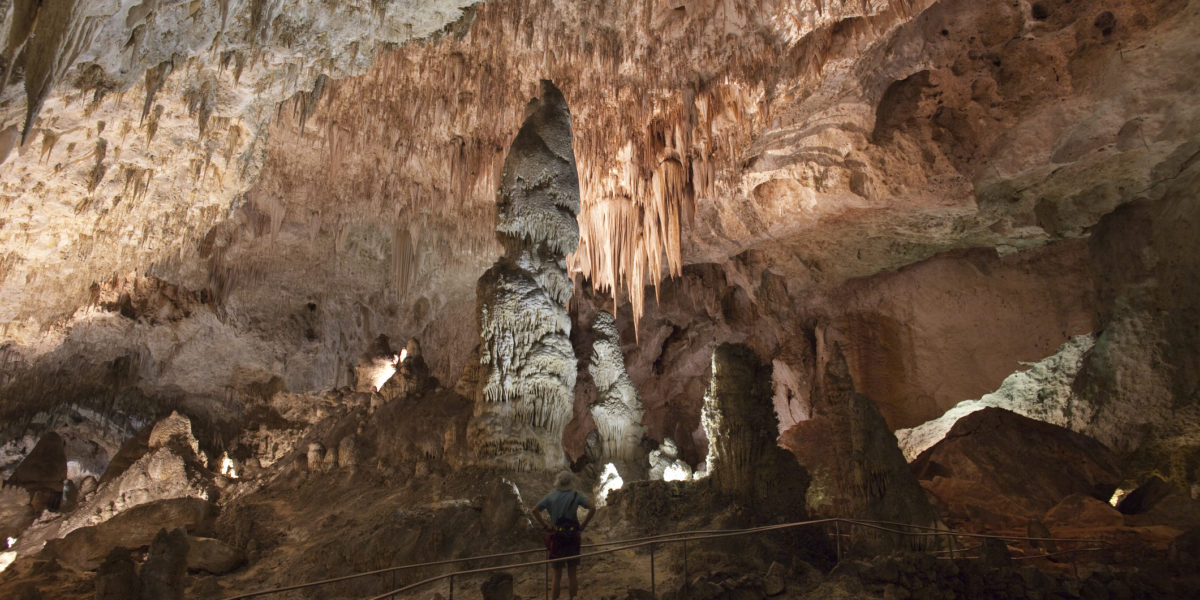
Way Down Under
At New Mexico’s Carlsbad Caverns, descend into a world of mystery

milehightraveler/ Getty
The first time Jason Richards crawled into a cave, he discovered a scatter of bison bones and a human skull. For a 14-year-old, that was all it took; he would spend the rest of his life exploring the underworld. The skull presaged what he would learn about caving: You can never predict what you’ll find.
Richards, now a National Park Service ranger, is escorting me through Slaughter Canyon Cave, one of the 105 known caves in Carlsbad Caverns National Park. It’s offering unpredictable wonders at every turn: A view eerily like the descent into the mines of Moria in The Lord of the Rings. An abstract pictograph of a dancing human, probably painted centuries ago by an Apache. A monstrous stalagmite partly hooded by white flowstone, a grim reaper visage the size of a cottage. A formation called a rim-stone dam that looks for all the world like the Great Wall of China―but only 4 inches high. Richards says two people have reported seeing a strange centipede pulsating with light in this cave, but we’re not privileged with a sighting today. (Just as well, actually.)
Slaughter Canyon is the most exotic and colorful cave I’ve ever been in, a grotesquerie of bizarre formations, most likely gnawed into their convoluted forms and surprisingly vivid colors by ancient sulfuric acid in suspension in the cave’s air. Most of the park’s 500,000 annual visitors never see Slaughter Canyon Cave because it’s a 30-minute drive from the visitor center and tours require reservations. But it’s even more spectacular than Carlsbad Cavern, the park’s famous centerpiece and namesake.
